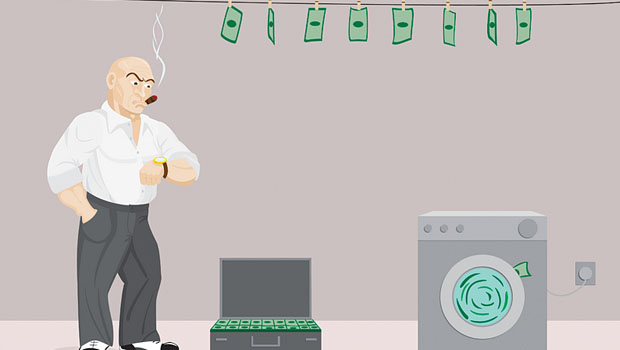The world is increasingly shifting from paper money to digital currency and the channels through which transfers may be made are growing. While the lines at money transfer centers are still long, more and more people are using online banking to move funds from one account to another. The ease at which transfers are made also means that criminals can quickly shift funds from account to account within a country or around the world.
It may be thought that money laundering involves only terrorists or drug lords, but convictions show that businessmen and government officials are regularly tempted to engage in money laundering to cover other transgressions — such as bribery. Due to the huge number of daily transactions in the global banking system, technology is the only hope to uncover financial activity that could be money laundering and provide verifiable evidence to send crooks to prison.
Brendan Walsh, head of sales in the Middle East for Norkom presented a seminar in Riyadh, with its partner Ejada Systems, about financial crime and anti-money laundering (AML) issues facing financial institutions. While banks want to try and keep their institutions from being used by criminals, they must also comply with international agreements about cross-border transactions. Norkom’s AML software helps banks monitor and analyze transactions and customer interactions to identify and investigate suspicious and criminal behavior. Another software solution from Norkom — Watch List Monitoring (WLM) — alerts the bank if any entity attempting to transact with it is listed on any of the financial industry’s numerous and diverse watch lists, enhancing the bank’s defenses and protecting it from exposure to sanctions and from inadvertently conducting business with known or suspected criminals.
“Money laundering is about processing the money that comes from illicit or illegal activities and it goes hand in hand with fraud,” Walsh said. “Whether that money ultimately ends up in the hands of drug cartels or terrorists or whether it’s just purely theft, once that money is cleaned, it could be used for anything. In the UK and Ireland at the moment there’s thirteen billion pounds worth of fraud. That includes such crime as social welfare fraud, banking fraud and insurance fraud. Fraud affects everyone. For example, insurance fraud often leads to increased premiums. As fraud grows, there are increased costs associated with regulation and compliance, so that money doesn’t end up in the hands of criminals.”
While financial institutions start out using Norkom’s AML solution to become compliant with international anti-money laundering regulations, they usually turn it toward fighting everything from credit card fraud to internal theft. Banks are able to employ Norkom’s single solution to address numerous types of financial crimes so it gives them a better view of all the possible questionable activity across their network.
“A fraud dollar lost is one that hits a financial institution’s bottom line,” Walsh advised. “And obviously, due to operating margins, you need to earn back more than a dollar to replace what has been lost. So in reality banks need to earn between $70 and $90 in new revenue for every dollar lost to fraud. This is where banks quickly begin to see that the value of our solution goes far beyond compliance.”










